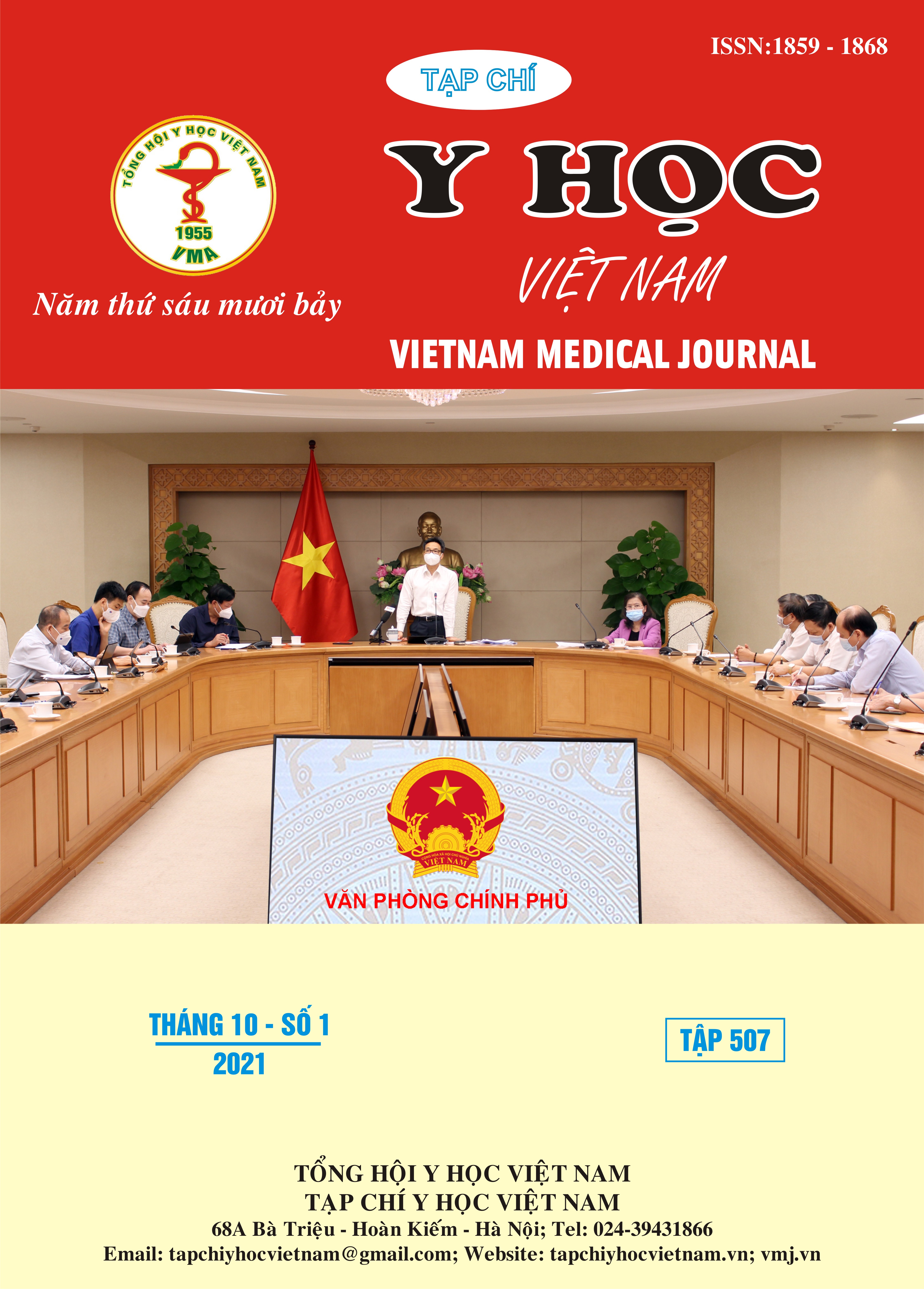CHARACTERISTICS OF LESIONS ON COMPUTER TOMOGRAPHY IN PATIENTS WITH NASO ORBITO ETHMOID FRACTURE AT VIET DUC UNIVERSITY HOSPITAL
Main Article Content
Abstract
Objectives: Description of lesions on Computer Tomography (CT) in patients at Viet Duc University Hospital with Naso Orbito Ethmoid fracture (NOE), to provide information for diagnosis and treatment planning. Subjects and method: The cross – sectional descriptive study of 43 patients with NOE fracture were treated at the Department of Maxillofacial – Plastic and Aesthetic Surgery, Viet Duc University Hospital from 01/2020 to 04/2021. The data were statistically analyzedby SPSS software. Results: In 43 patients, 37 patients (86%) had fronto – maxillary joint damage, 100% had lacrima-infraorbital margin lesions, 33 patients had medial orbital wall lesions (76,7%), nasal bones fracture were founded in 30 patients (69,8%), 34 patients with septal fracture (79,1%), 42 patients with ethmoid sinus lesions (97,7%), 14 patients (32,6%) with frontal sinus walls fracture. The rate of lesions according to type I is the most common (65.1%), followed by type II (30.2%), the least common is type III (4.7%). The rate of maxillary fracture is the highest at 74.4%. Traumatic brain injuries for 44.2%. Zygomatic complex and mandibular fractures are less common with the rate of 27.9%, respectively; 16.3%. Conclusion: CT is the gold standard for diagnosing NOE fracture. Besides, it also helps doctors quickly detect accompanying injuries such as facial bones fractures, traumatic brain injuries. Thereby, becoming an effective tool to help doctors plan a comprehensive treatment to achieve the best effect, minimizing complications.
Article Details
Keywords
Naso Orbito Ethmoid, Computer Tomography, frontal sinus walls fracture, obstruction of the nasal airway
References
2. Andrews BT, Surek CC, Tanna N, Bradley JP. Utilization of computed tomography image-guided navigation in orbit fracture repair. The Laryngoscope. 2013;123(6):1389-1393. doi:10.1002/ lary.23729
3. Dubois L, Dalmeijer SWR, Steenen SA, Gooris PJ. Obstruction of the Nasal Airway in NOE Fractures. Craniomaxillofacial Trauma Reconstr Open. 2020;5:2472751220940130. doi:10.1177/2472751220940130
4. Onișor-Gligor F, Țenț PA, Bran S, Juncar M. A Naso-Orbito-Ethmoid (NOE) Fracture Associated with Bilateral Anterior and Posterior Frontal Sinus Wall Fractures Caused by a Horse Kick—Case Report and Short Literature Review. Medicina (Mex). 2019; 55(11):731. doi:10.3390/ medicina5 5110731
5. Wei J-J, Tang Z-L, Liu L, Liao X-J, Yu Y-B, Jing W. The management of naso-orbital-ethmoid (NOE) fractures. Chin J Traumatol. 2015; 18(5):296-301. doi:10.1016/j.cjtee.2015.07.006
6. Potter JK, Muzaffar AR, Ellis E, Rohrich RJ, Hackney FL. Aesthetic management of the nasal component of naso-orbital ethmoid fractures. Plast Reconstr Surg. 2006;117(1):10e-18e. doi:10.1097/01.prs.0000195081.39771.57
7. Cruse CW, Blevins PK, Luce EA. Naso-ethmoid-orbital fractures. J Trauma. 1980;20(7):551-556. doi:10.1097/00005373-198007000-00003
8. Nguyễn Hùng Thắng, Vũ Ngọc Lâm, Lê Đức Tuấn (2014), “Nghiên cứu đặc điểm lâm sàng gãy phức hợp mũi-sàng-ổ mắt một bên”, Tạp chí Y Dược lâm sàng 108, (6), tr. 102-106.
9. Cultrara A, Turk JB, Har-El G. Midfacial Degloving Approach for Repair of Naso-Orbital-Ethmoid and Midfacial Fractures. Arch Facial Plast Surg. Published online March 1, 2004. doi:10.1001/archfaci.6.2.133


